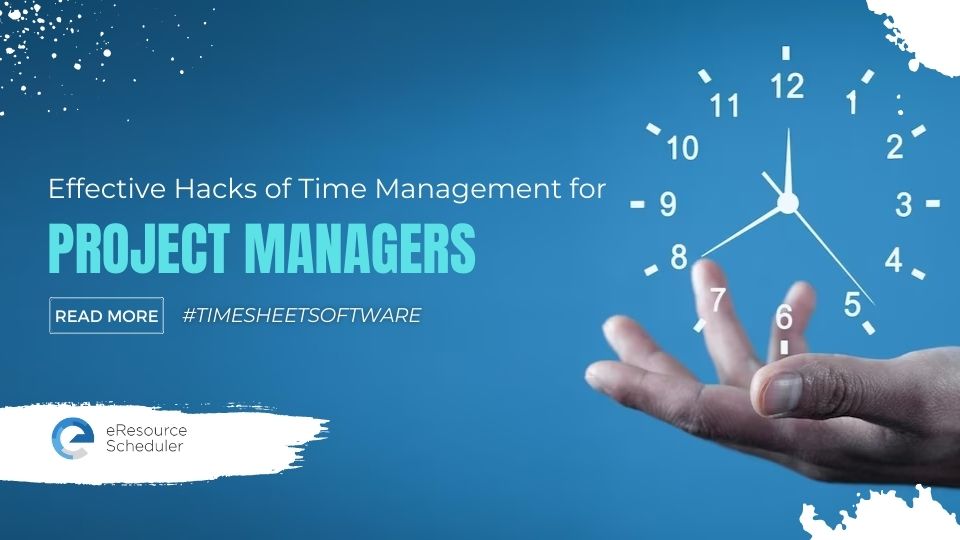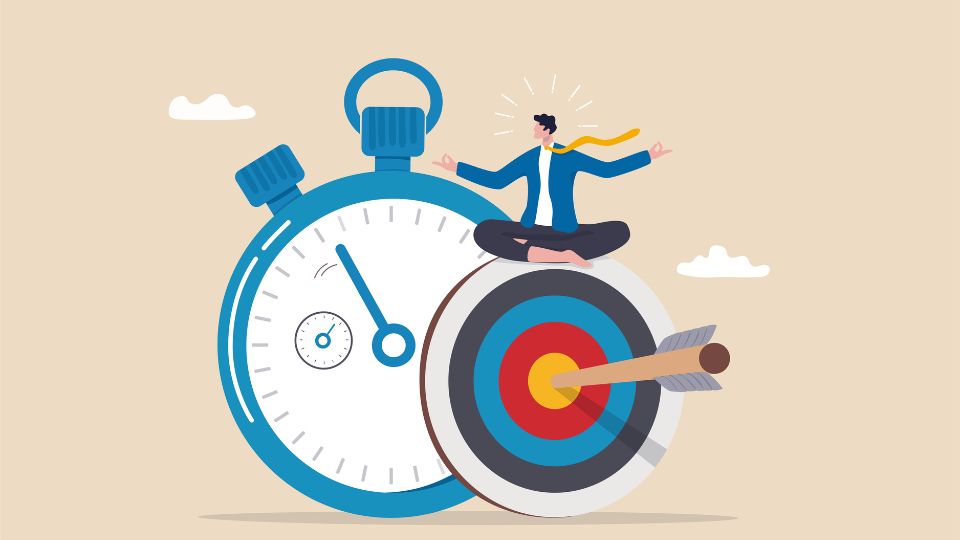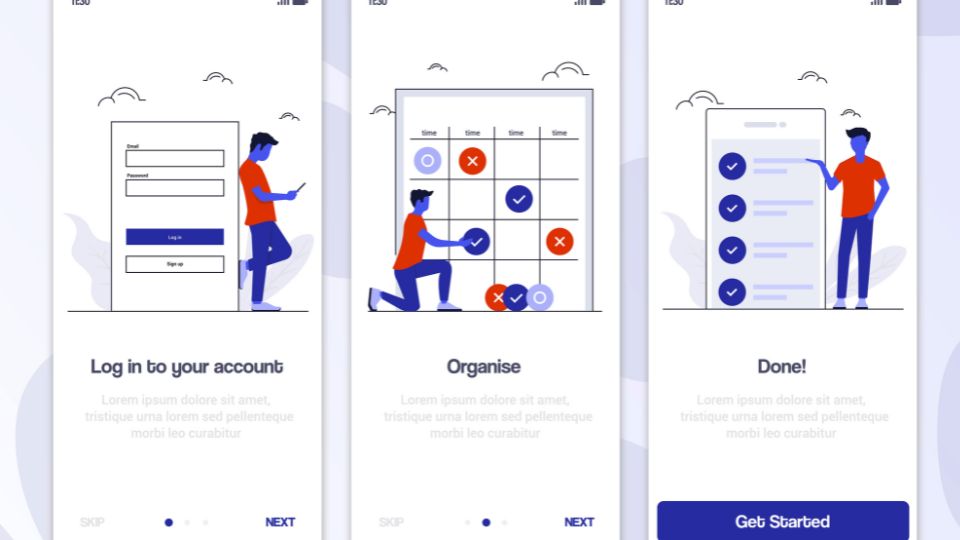
A famous quote by Stephen R. Covey states, “The key is not in spending time, but in investing it.” Mastering the important art of time management will not only benefit your personality but also your professional life. Effectively managing your time results in better productivity and efficiency, reduced stress, and greater success in life. A person who is better at time management can efficiently make the most of his or her day. Though there is no one formula for time management, figuring out what works for you, is the first step to creating a productive and fulfilling life. So, to help you enhance your time management skills, here are the 10 most effective hacks that you should follow. In addition to following these time management hacks, implementing a timesheet software can help you with time scheduling and enterprise time tracking.

What are SMART goals? SMART is an acronym where S stands for Specific, M for Measurable, A for Achievable, R for Realistic, and lastly, T for Time-bound. So how can you do that? It’s simple. If your goals are not attached to the outcome of the project or are not reaping benefits, then there is something amiss in your strategy. On the other hand, if you set goals that are specific, can be measured, are achievable and realistic, and also have a time window or deadline attached to them, then that would enable you to bring a robust foundation and structure to your projects and work. The right time management software helps in setting the right goals for each project, time allocation, setting up project timesheets, and employee time management.
Though you may have many goals or tasks to achieve. It is important to prioritize all those tasks depending on their importance, criticality, and urgency. For instance, you could take a look at your list of tasks and determine which ones are most important and urgent. You should aim to complete those tasks first on top priority. Next, determine the tasks that are important but are not very urgent. So, you can decide the timeline to complete these set of tasks. Then, there are tasks that are urgent but may not be important. These tasks can be delegated to someone. Lastly, there are tasks that are neither urgent nor important. These tasks can be deprioritized and completed later.
Multi-tasking is never a good idea. Emphasize focusing on one task at a time for producing top-quality results. When we multitask, our attention gets divided in several directions and we may feel overwhelmed. Some people also start too many things at once and don’t know how to tie up the loose ends. This results in multiple incomplete tasks and nothing getting done in time. Therefore, staying focused single-mindedly on each task at hand until it is complete is a better strategy for time management.
Morning time is always more productive for most people as the day has just begun and you have a fresh mind and vigour to achieve results. Prioritizing and picking up the most critical task right in the morning is always the best strategy. As they say, if you are supposed to eat two or more frogs, why not eat the biggest one of them first? Once you take care of the most critical task in the first half of the day, you will feel more free and more productive. Your time management will be more effective as you will be able to focus on all other things easily in the latter part of your day.

Determining the time limit or deadline for completing each task enables you to be more focused and efficient. Allotting specific time for each task helps with better planning and execution. A specified timeframe also helps measure productivity as one can measure planned vs. actual time taken. However, if a time limit is not determined, then every employee may take their own time and the project might exceed the deadline. A time management software can help create a work breakdown structure and allocate time to each task in a few easy steps.
Creating batches of all similar tasks together helps in assessing the actual work and increasing your productivity. You may be making a daily to-do list where you can create smaller groups or batches of all similar tasks that can be done at one time, you will be able to plan your day better. To implement time batching, you can schedule some part of your time every day for such related tasks. For example, a part of the day can be dedicated to scheduling meetings, checking emails, and other administrative tasks. Other segments of the day can be dedicated to completing project-related work or managing the team, etc. A time scheduling app is a great help with this as it provides work timesheets, time allocation features, and enterprise time tracking.
Taking small breaks throughout your day is in fact one of the most effective time management hacks. Wondering how? Working for long hours on a stretch can drain out and tire the employees. Not only that, but it can also take away the creative streak and make the team members feel frustrated. Taking frequent short breaks helps employees rest and refresh their minds. Once they are rejuvenated, they can think creatively and come up with better solutions to the problems they may face.
You may be great at your day-to-day activities, but it is equally important to plan ahead and ensure you are aware of the upcoming deliverables and plans. Having your to-do list for the next day and a broad agenda for the upcoming week or month may help you plan your capacity or your team’s capacity in a better way. A timesheet software not only helps with enterprise time tracking, it also enables project managers to plan ahead effectively and do work and time allocation. The employee timesheets help in calculating utilization percentage or accurate productivity, which in turn, helps to plan capacity and forecast staffing requirements for the future.
How can you track the time being spent by each team member on various tasks and projects? This is very important to find out if they are being productive or spending too much time on non-productive tasks. Time-tracking becomes even more tough if you have a distributed or remote team. Implementing time management software or a time scheduling app is beneficial in this regard. With the help of employee timesheets, the staff can fill in their time entries, which can be later used to analyze data. Project managers can pull out reports and information about resource utilization and check the planned vs. actual effort on any project. This not only helps to calculate each team member’s productivity but also helps with better time management.
Other than efficient project management and execution, it is very important to assign responsibilities to various people so that you can free up time for critical tasks that need your attention and expertise. The first step before delegating is to find the right people to delegate tasks to. You should identify employees with the right skills, expertise, interest, etc. required to accomplish the project or task. After delegating, you should not micromanage, but just keep a tab and find out if they require any assistance.

A leading timesheet software or time-scheduling app would include the following features:
Implement eResource Scheduler to seamlessly manage a distributed or remote team, monitor productivity and performance, keep a tab on the status of projects, and lots more. Your staff can use the tool for enterprise time tracking, work and time allocation, and project and resource management. Your employees can save information as time entries for the work done and keep tracking their productivity in real time. This employee timesheet software offers you a clear insight into your resource pool, overall capacity, resource availability, utilization, etc. You can easily integrate this award-winning time management software with other systems that may be in use by your organization currently. Have any doubts or queries about this tool? Book your free trial and enjoy the benefits of the staff timesheet management process.
Plan Smarter. Schedule Faster.
Join thousands already using eResource Scheduler to align teams, time, and tasks seamlessly.